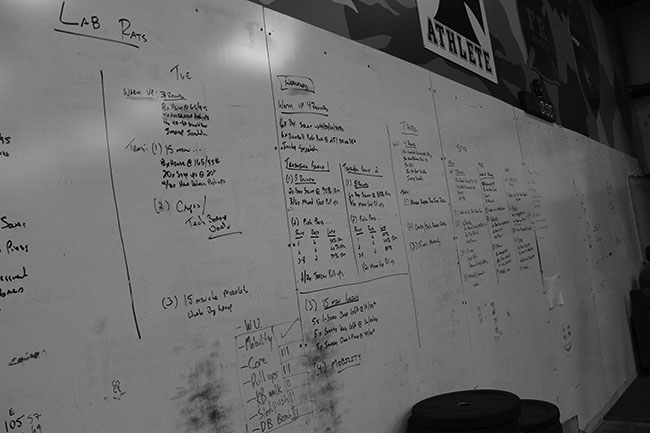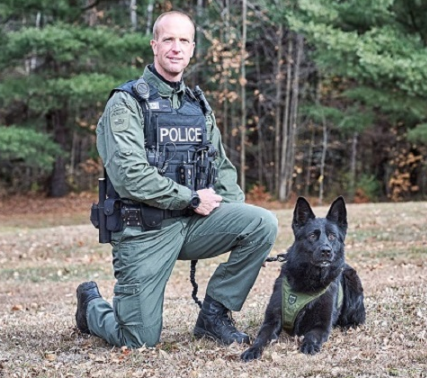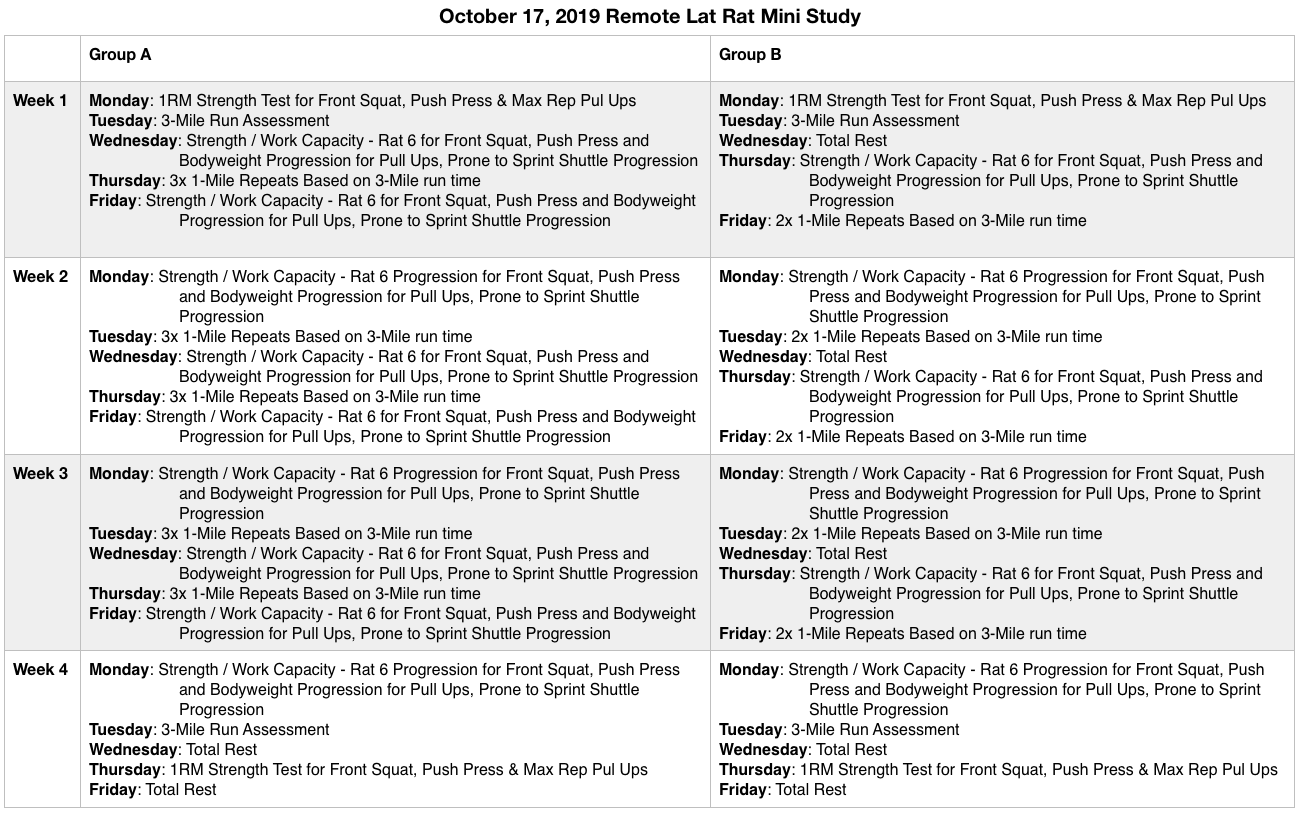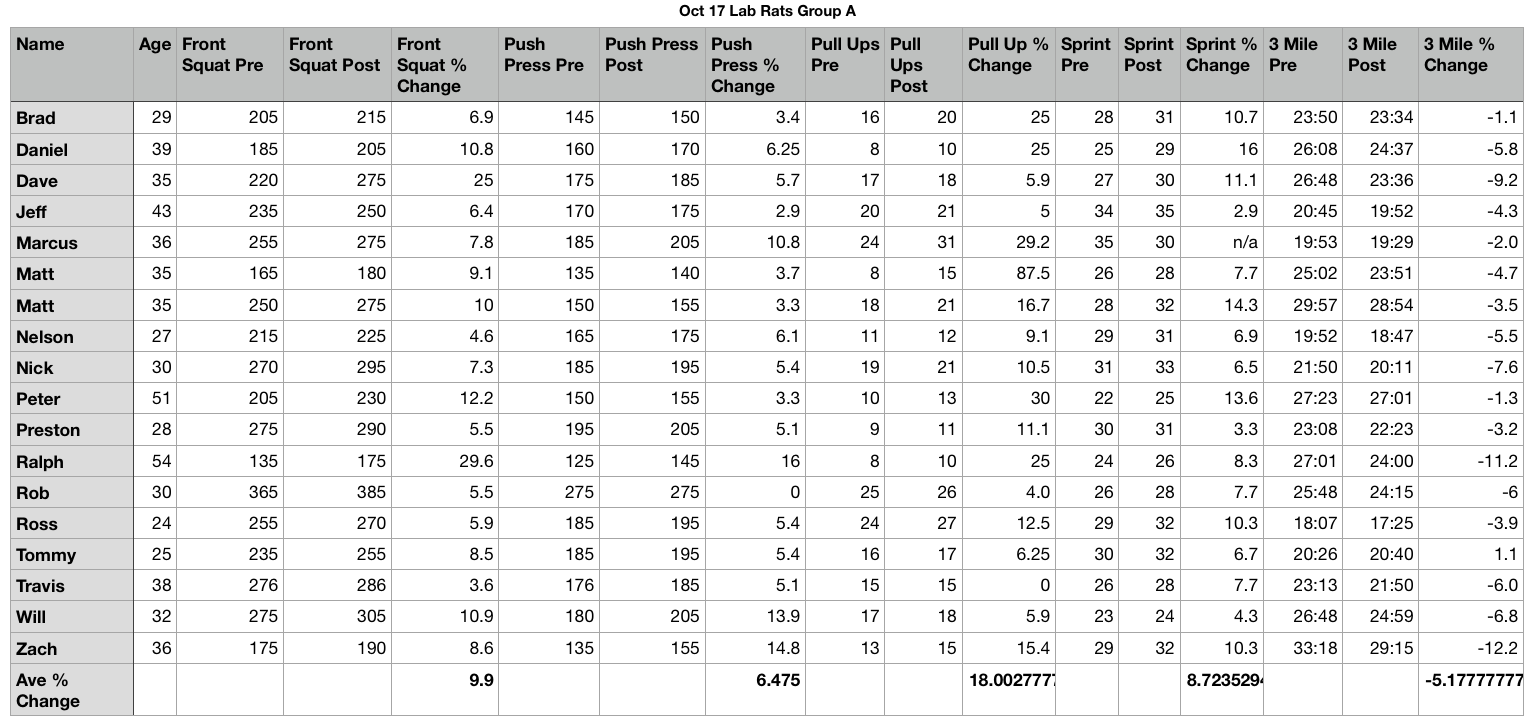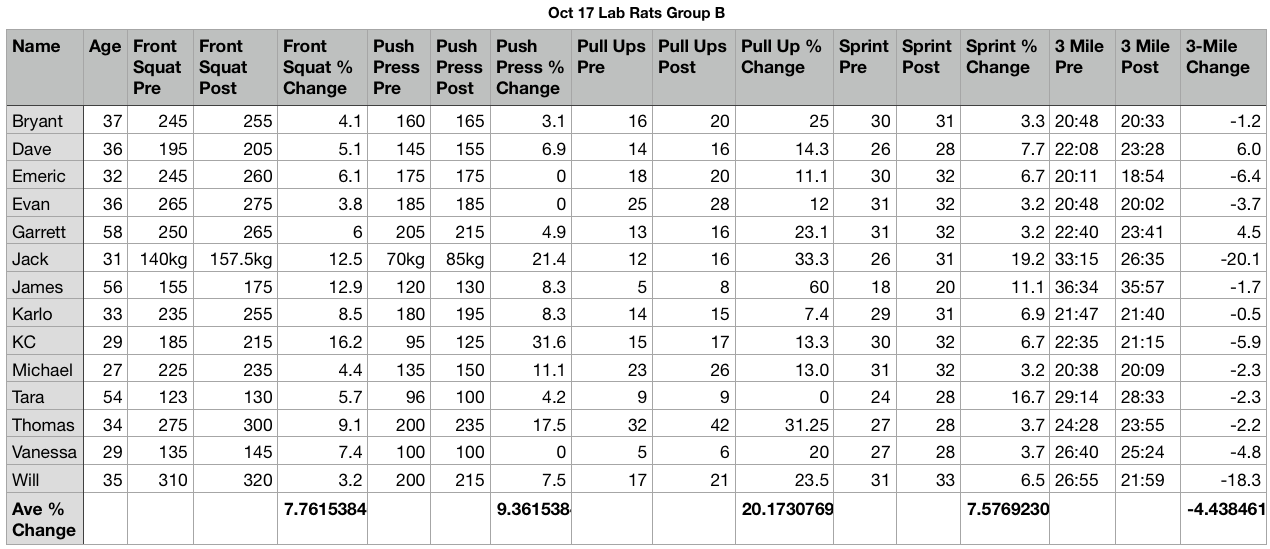QUESTION
First, I just want to say thank you for all the hard work you put into your content. It is really impressive.
I have a couple quick questions. What type of rucksack/backpack do you recommend for the ruck-based plans? I’m getting back in after being out a year and a half, so I no longer have the issued rucksack. My laptop backpack won’t survive the 40-65 pound weight. Looking at backpacks and rucksacks, I see that it could be quite the investment. Any recommendations would be appreciated.
Secondly, could you point out the best way to progress for me? As I said, I’ve been out of the Army Guard for about a year and a half. I’m 38 years old and out of shape, but my ultimate goal is special forces. It may not be a feasible goal given my current starting point and age. However, I’m going to go for it. The best current option at the moment is a a reserve recruiter said there might be a Psyop slot for me. Or special forces, but still badass. My thought, from my skimming of your material, is to take four weeks and do the 2-mile run improvement plan in the morning and the body weight plan in the evening to improve my overall baseline and get back in shape. What then? Unfortunately, I don’t know if/when the Psyop position will happen, so I can’t backwards plan from a date.
Let me know your thoughts and suggestions.
ANSWER
We’ve had good luck with framed, used, medium-sized ALICE pacs for training. You can get these on amazon and army-surplus stores. We load the weight – usually iron plates – high in the “radio pocket” in the pack. If not, a good, solid, internal-frame pack will do. Look for a used one for training … you’ll beat it up.
Plan? – Work through the plans and order in the Virtue Packet – beginning with Military OnRamp.
– Rob
QUESTION
I’m writing from Australia.
After hearing good things about you guys, I’m considering trying one of your training programs. I’m not sure which one, and I was hoping to get your advice.
– I’m 43 years old.
– I work a desk job, and am not military or LEO,
– I’ve got a decent home gym with squat rack, barbells etc and have lifted for the last two years.
– I’m still a bit shy of your strength standards, and would ideally like to hit them.
– In terms of focus, I’m guessing I fall into the ‘general’ fitness category, and I like the idea of being well-rounded (I like to run). But, if I had any initial focus, it would probably be getting my strength numbers up.
– I can train 5-6 days a week.
Given that background, (including my age) is there any particular program or packet that you’d recommend I jump in with?
ANSWER
I’d recommend the plans in the Country Singer Packet I, starting with Johnny. These are designed for civilian athletes and concurrently train strength, work capacity, chassis integrity and endurance (running and some rucking).
– Rob
QUESTION
I was just recently cleared by my surgeon to resume training without restrictions following a total left shoulder replacement in May. I just recently finished the 6 week, Arm Injury Training Program. I really enjoy the structure and goals in your plan based workouts. I’m struggling to figure out what the next steps are in getting that shoulder back up to condition and a program where I don’t over train the rest of the body. Obviously, I’m working with 3-5 lb weights on my recovering shoulder, etc… i am working with my PT but they focus on the injured extremity. Again, I’m cleared without any restrictions. I’m still required to complete a run, pull-ups, sit ups and dummy drags as part of my fitness requirements. Thank you.
ANSWER
Couple options:
1) Bodyweight Foundation Training Plan – great plan, but not sure if your shoulder can handle your bodyweight now?
2) Single Limb Strength Training Plan – this will allow you to use lighter loading with your recovering limb, and go heavy on your good limb.
– Rob
QUESTION
I’m looking to put on muscle and have been doing some research on this. One thing that keeps coming up is progressive overload. Does this program employ that principle or are the sets and reps consistent throughout?
ANSWER
Progressive overload is part of all strength and conditioning programming – strength, work capacity, endurance.
Understand the Hypertrophy Plan for Skinny Guys is not a strength program – it’s designed not to build max effort strength, but rather muscle mass.
In general, going heavy with few reps builds max effort strength. Going moderately heavy, with reps per set in the 8-15 range, builds mass.
This plan builds the reps per set as you progress through the programming, and uses “hard but doable” loading to progress the load.
Click the “Sample Training” tab to see the entire first week of programming. I’d recommend you complete it before purchase.
– Rob
QUESTION
I’m 29 years old and I’m currently a police officer. I served four years in the Marine infantry from 2009-2013 and I’m looking at joining the Army with hopes of becoming a member of the 75th Ranger Regiment. I have been lifting a lot of weights and not too much running or calisthenics or rucking and no swimming. I’ve seen some of your improvement plans such as pull ups, push ups, running and rucking and I’ve seen a ruck based selection training packet that you guys offer. Are there any programs that you’d recommend for RASP?
ANSWER
We have a RASP I & II Plan – which what I’d recommend you complete the 6 weeks directly before RASP.
Between now and starting the RASP Plan, I’d recommend the plans/order in the Virtue Packet. Start with Humility.
– Rob
QUESTION
I know about your workout plans and have subscribed to the Pushup and Pullup improvement plan, but wondered if you had any advice about tapering.
I am 4 weeks out from an Air Force Special Tactics Officer selection week I have been prepping for quite a while for.
ANSWER
I’d recommend you complete the first 8 weeks of the USAF STO/CRO Phase II Selection Training Plan, the skip to week 8 – which is a taper – for the week directly before selection.
– Rob
QUESTION
I’m looking into getting into Law enforcement. I don’t have access to a gym. Is there any workout plans from MTI for strictly body weight?
ANSWER
Bodyweight Foundation Training Plan.
Don’t be fooled by “bodyweight” – this is and intense training plan that deploys an initial assessment. The follow-on progressions are based on the initial assessment results and this way the plan automatically “scales” to your incoming fitness level.
Good luck!
– Rob
QUESTION
I had been using your programming a lot prior to BUD/s. I am in 3rd phase right now and prior to leaving for land nav I was hiking and fell off a 30 ft cliff. Luckily I came out with only a concussion, small fracture on my elbow, and a bruised heal. I won’t be able to continue with my current class but I’d like to get healthy enough to pick up with the following class (sometime mid December). I most likely won’t be able to start lower body stuff for another couple days and then the elbow will take around 6 weeks (hopefully less) to start to train with. Do you have any programming I could use for about a month to maintain fitness for BUDs and put myself in a position to class up with the next class?
ANSWER
Sorry about your injury.
Training Plan for Athletes Suffering Arm Injury – this plan will train the rest of your body around your elbow.
– Rob
QUESTION
I’m a current subscriber and I’ve been progressing through Johnny. One issue I’ve had is the endurance days not lining up with my cycling and running schedule. Currently I have just been occasionally (1-2 times a week) substituting running or cycling for the work capacity portion. Is this the best way to maintain my cycling group schedule and do this program?
ANSWER
Better would be to do 2-a-days and still get the work capacity work in. Long cycling and work capacity are not the same thing. Work cap efforts are shorter, but much more intense.
– Rob
QUESTION
I am looking to start a subscription to ready myself for USMC Methods of Entry class. While the course is not as physically demanding as some of the other military schools I would like to be prepared (I will be only one of two Air Force in the class). Is there a specific plan that you would recommend for tactically moving, breaching, and navigating obstacles while wearing kit and carrying breaching tools?
ANSWER
I’d recommend San Quentin, a plan I recently built for correctional officers. Why – it includes strength and multi-modal work capacity, plus tactical agility, but also focused grip strength work and upper body hypertrophy. I feel it will transfer well to the breacher school.
– Rob
QUESTION
I’m currently starting the dryland ski training plan v5. I’m about a week in.
I don’t have access to a sandbag at my gym, I’ve been substituting dumbbells / kettlebells depending on the exercise.
Is this ok? Or is there a better substitute that a normal gym (golds gym style) would have?
ANSWER
We’ve not found a good replacement for a sandbag. Others build their own and bring it to the gym with them.
– Rob
QUESTION
I was just reading about your changes to the Backcountry ski program. I understand and agree with most of your changes, however I’m curious about the elimination of warm ups? There is so much evidence regarding injury reduction, efficiency of movement, and improved performance- why cut it out? Even for the recreational athlete, warm ups have a huge benefit. Curious about your thoughts on this!
Thanks for doing what you do
ANSWER
If you’re familiar with our sessions, you know our programmed warm ups don’t follow the “dynamic warmup” protocols of sports performance coaches – many from that world don’t approve of MTI Programming.
In this case, I was concerned about performance/warm up for the first 1-3 intervals of the touch/jump/touch to box efforts. As programmed, these come after the chassis integrity/upper body circuit – which this week on Wednesday was:
6 Rounds
5x Sandbag Getup @ 40/60#
10x Hinge Lift @ 85/115#
3/5x Scotty Bobs @ 15/25#
This is a vigorous, 10-13 minute effort – where we’re breathing hard, and sweating by the end.
In all our programmed warm ups, I include a deep squatting or lunging movement – and in this case, the sandbag getup does this. The Hinge Lift gets the hips/butt, and the scotty bobs get the upper body. Indeed, this could be a programmed warm up for one of our sessions, though I’d drop the rounds to 3-4 and add an instep stretch.
I’m 51, and by far take the longest to “warm up” of all the lab rats completing this cycle, and I’m ready to go for the Touch/Jump/Touches.
In the real world, for both our Tactical Athletes and Mountain Athletes, few have a chance to do any type of “warm up” before maximum performance. Many of my pro freeskiers and snowboarders report hopping out of a helicopter, high on a peak with just enough room to stand, strapping on their boards, and hitting it. Likewise, many LE athletes and military athletes move right from sitting/cold situations to full on tactical performance without any notice. Sometimes I wonder if warm ups for every session create a training “scar” which will lead to injury in the real thing.
But back to training, the specific warm up depends on the specific training session. For example, if my athletes are doing heavy back squats first thing in the training session, they’ll be doing some back squats in the warm up. I’ve seen many sports performance dynamic warm ups performed before strength work – which don’t prepare the athletes for the following sessions. Long ago I experimented with these protocols and found they were overly complicated, too general, too long, and most importantly, didn’t prepare athletes for the following training session.
Finally, this is a cycle we’re lab ratting at my Wyoming facility, – and testing – if I find there’s an issue, I won’t make changes to the requisite program on the site.
– Rob
QUESTION
I was reading through the most recent MTI email blast and an older article (“Run/Ruck training thumb rules you can use” -April 3, 2016 by Jordan Smothermon). Since I’m a quantitative Fisheries Scientist by profession (i.e. – I play with numbers alot), I got to playing with the numbers presented there an found what I think is a numerical inconsistency. Rule #4 states that a 10% uphill grade will halve your speed. Rule #5 states that every additional 1% of uphill grade will add 15s per mile. These two cannot both be true.
For example, assume your rucking time is 15min / mile (4mph). Rule #4 implies that with a 10% grade your time per mile would double to 30min/mile (2mph; i.e.- since your speed gets cut by 1/2 your time per distance doubles). However, Rule #5 implies that with a 10% uphill grade your time per mile should only be 17.5min/mile (~3.4mph; i.e – 15s * 10% = 150s = 2.5min + 15min/mile= 17.5min/mile). Obviously, both these cannot be true and the huge discrepancy between speeds makes the difference important. You’d plan a hike/ruck/mission very differently at 30min per mile v. 17.5min per mile.
It looks like the numbers came from two different sources which probably were never aware of each other let alone cross-checked for logical/mathematical consistency. Also one or both maybe be anecdotal v. Empirical. It might make an interesting mini-study to try and reconcile the two and the results would certainly be “mission-directed.”
Thanks for putting out material that provides a workout for the mind as well as the body!
ANSWER
Thanks for the note and math!
We’ve actually put many of these rules to a test with our own mini studies – which you might find interesting:
Moving Uphill, a 10% Grade Cuts Your Speed by 1/3, not 1/2
Mini Study: Loading Increased Caloric Burn for Uphill Movement 50+ Percent
MINI STUDY: INVESTIGATING THE EFFECTS OF LOADED UPHILL SKINNING SPEED; LIGHT AND FAST VS HEAVY BUT SAFE
Mini Study Finds 1 Lb On Your Feet = 4 Lbs On Your Back for Slow Hiking Pace
– Rob
QUESTION
I’m looking for a good bench plan. I’m currently at FLETC and part of our PT test is a bench press. I tried the super squat strength program but didn’t see too many gains. Would you recommend anything else?
Thank you very much for all the help and I appreciate what you do.
ANSWER
– Rob
QUESTION
I was reading your article “On Mental Fitness”, and I noticed that you said that you have mental fitness rules for your athletes, as well as a style of “sticks and carrots” to develop your athletes’ mental fitness. Can you educate me on what your rules are as well as how you go about developing mental fitness? Very interested in that aspect.
ANSWER
When applicable, we have 2 primary “rules” for multi-mode work capacity events:
1) No rest in transition between exercises
2) If you have to rest, limit your rest to 5 breaths
We’ve seen huge performance gains with these over the years for athletes not used to the intensity of gym-based work cap efforts.
What we’re not sure of empirically is the transfer of gym-based mental fitness to mission-direct mental fitness. Anecdotally, athletes who’ve completed MTI Programming have reported being mentally stronger in the field, but I’ve got no “numbers” to verify this. I believe mental fitness is primarily “mode-specific.”
– Rob
Subscribe to MTI's Newsletter - BETA

